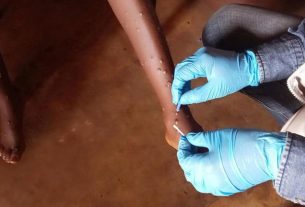Dublin is facing a crack cocaine crisis, a new drug epidemic that is quickly replacing heroin as the substance of choice for many addicts. As the use of crack cocaine becomes more widespread, it is reshaping the landscape of addiction in the city, affecting vulnerable communities and putting increasing pressure on social services. With frontline support workers warning that this epidemic is intensifying, the impact of crack cocaine on public health, safety, and families cannot be ignored.
In the face of this rapidly escalating issue, Dublin’s crack cocaine epidemic is exposing the devastating toll that addiction takes on individuals and communities. With increasing numbers of people turning to the drug, experts are sounding the alarm, urging for immediate action and increased support.
What Makes Crack Cocaine So Addictive?
Crack cocaine is a powerful stimulant derived from powdered cocaine, but processed in such a way that it forms small, smokable rocks. When smoked, it produces a short, intense high that hits the user almost instantly, creating a rush of euphoria, followed by a rapid and severe crash. This dramatic shift from pleasure to despair is what drives users to seek another hit, perpetuating a cycle of addiction.
The drug’s effects are temporary—typically lasting only a few minutes—making users feel the need to repeatedly consume the substance to avoid the “come down.” This leads to a pattern of binge consumption, where people continually chase the high, often spiraling deeper into addiction and financial instability. For many users, the high is fleeting, but the desire to relive it is constant. As one addict explains, “You get a rush. You come down. And then you have to go again.”
The Rise of Crack Cocaine in Dublin
For years, heroin dominated Dublin’s drug scene, particularly in marginalized inner-city neighborhoods. However, the emergence of crack cocaine is rapidly changing that landscape. The drug is more easily accessible, cheaper, and often perceived as a quicker fix compared to heroin, which requires longer-term commitment and more significant amounts of money. Dealers have increasingly shifted toward selling crack cocaine in areas previously dominated by heroin use, leading to a sharp rise in demand.
Many addicts now report that they are able to purchase crack cocaine for a fraction of the cost of heroin, making it more accessible to those who might have otherwise been priced out of the heroin market. Addiction workers have expressed concern over the quick onset and intensity of the high, which they believe makes crack cocaine even harder to resist, thus making recovery efforts even more challenging.
The Impact of Crack Cocaine on Dublin’s Communities
The devastating impact of crack cocaine addiction is being felt in many parts of Dublin, particularly in economically disadvantaged neighborhoods where heroin use had previously been a significant issue. As crack cocaine use grows, it is leading to rising homelessness, an increase in petty crime, and a dramatic decline in mental health among users.
Many crack cocaine users are living in poverty and desperation, with little to no access to the financial resources needed to support their habit. As one local addiction worker pointed out, “The addiction is very consuming. The high is short, but the crash is so severe that it drives people to make drastic choices—stealing from their families, committing petty crimes, or selling anything they can to fund the habit.”
The combination of economic deprivation, lack of affordable housing, and social marginalization means that many users become trapped in an endless cycle of addiction. And with mental health issues such as depression, paranoia, and hallucinations commonly associated with crack use, users often find themselves in increasingly vulnerable positions.
Addiction Support Struggling to Keep Up
Addiction support services in Dublin are facing an uphill battle in trying to manage the growing number of crack cocaine users seeking help. The demand for detoxification, rehabilitation, and mental health support has surged, but services are overwhelmed and underfunded. Frontline workers in addiction services report seeing a steady increase in the number of individuals addicted to crack cocaine, often alongside heroin or other substances. The rise in crack cocaine use is also creating new complexities in recovery and treatment plans.
Drug services are finding it particularly difficult to keep up with the demand, with many support programs stretched to capacity. One addiction counselor explained, “It’s a difficult and dangerous pattern. People are using multiple substances, including crack cocaine, and the intensity of the addiction is forcing many of them into survival mode, where they can’t even think about getting clean—they’re just thinking about getting the next hit.”
The Financial Strain of Crack Cocaine Addiction
A key factor contributing to the growing epidemic is the financial strain crack cocaine use places on addicts. Due to the drug’s cheap price and the rapid consumption cycle, users often find themselves scrambling to fund their habit. Many people resort to desperate measures—selling possessions, borrowing money from family and friends, or engaging in petty crime—to support their addiction.
A local activist said, “Crack addiction isn’t just affecting the individuals—it’s affecting families, communities, and neighborhoods. People will sell anything to get their next hit, and that creates more and more dysfunction.” The financial desperation linked to crack use has become a significant problem, particularly in families already struggling with poverty and instability.
Potential Solutions and Support for Those Affected
As the crack cocaine epidemic worsens, a multifaceted response is urgently needed. Experts agree that a comprehensive strategy that includes prevention, treatment, harm reduction, and economic support for affected communities is necessary to address the issue.
- Expanding Access to Addiction Treatment: There is an urgent need for more rehabilitation centers and detox services to help individuals break free from the grip of crack addiction. Funding for these services must be increased to meet the growing demand, with a focus on creating long-term recovery programs that help individuals rebuild their lives.
- Community-Based Outreach: Greater emphasis should be placed on community-led support systems that offer harm reduction, such as needle exchanges, overdose prevention programs, and safe spaces for individuals in recovery. Peer-led support groups can help to reduce stigma and provide a supportive environment for those affected by addiction.
- Prevention and Education: Public health campaigns aimed at educating the public—particularly young people—about the dangers of crack cocaine and other drugs are vital. Schools and community centers should be involved in spreading awareness of the risks associated with drug use, particularly the dangers of getting trapped in an addiction cycle.
- Addressing Underlying Socioeconomic Issues: Many of the areas most affected by crack cocaine use are also the most economically disadvantaged. Policies that focus on housing, education, and employment opportunities are essential for tackling the root causes of addiction. Providing people with economic stability can significantly reduce their vulnerability to falling into addiction.
- Supporting Families: Family counseling and financial aid programs for those struggling with addiction could help mitigate some of the financial and emotional strain caused by crack addiction. Supporting families in crisis can prevent the cycle of addiction from continuing to damage entire communities.
Conclusion
Dublin’s crack cocaine crisis is a growing epidemic that is reshaping the city’s landscape of addiction. With the rise of the drug’s availability, its intense effects, and the destructive cycle of use, it is clear that this epidemic requires urgent and coordinated intervention. Addiction services, community outreach, and policy reforms are all needed to stem the tide of crack cocaine use and offer a lifeline to those affected by this devastating crisis. Without immediate action, the consequences for individuals, families, and communities across Dublin could be dire.
References
- “Dublin’s Crack Cocaine Epidemic: ‘You Get a Rush. You Come Down. And Then You Have to Go Again’,” The Irish Times, November 9, 2024. Link
- Health Service Executive (HSE). (2023). “The Changing Landscape of Addiction in Ireland.”
- Irish Council on Social Housing (ICSH). (2022). “Poverty and Addiction in Ireland: Understanding the Link.”


